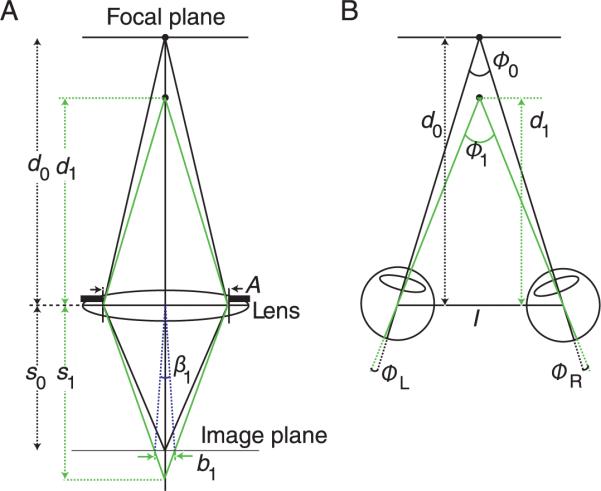Figure 1.

The viewing geometries underlying blur and disparity. A) Formation of blur. A lens is focused on an object at distance d0. Another object is presented at distance d1. The aperture diameter is A. The images are formed on the image plane at distance s0 from the lens. The image of the object at d1 is at best focus at distance s1 and thus forms a blur circle of diameter b1. That blur circle can be expressed as the angle β1. B) Formation of disparity. The visual axes of the two eyes are converged at distance d0. The eyes are separated by I. A second object at distance d1 creates horizontal disparity, which is shown as the retinal angles ΦL and ΦR.
